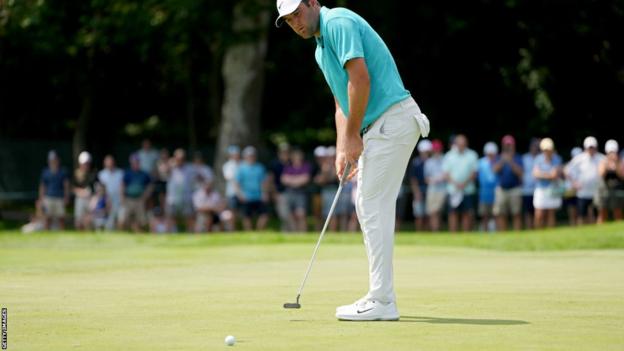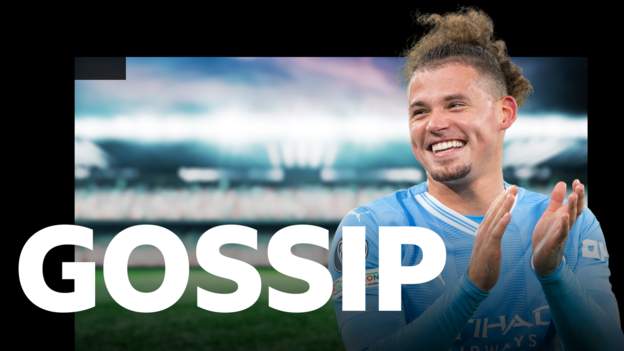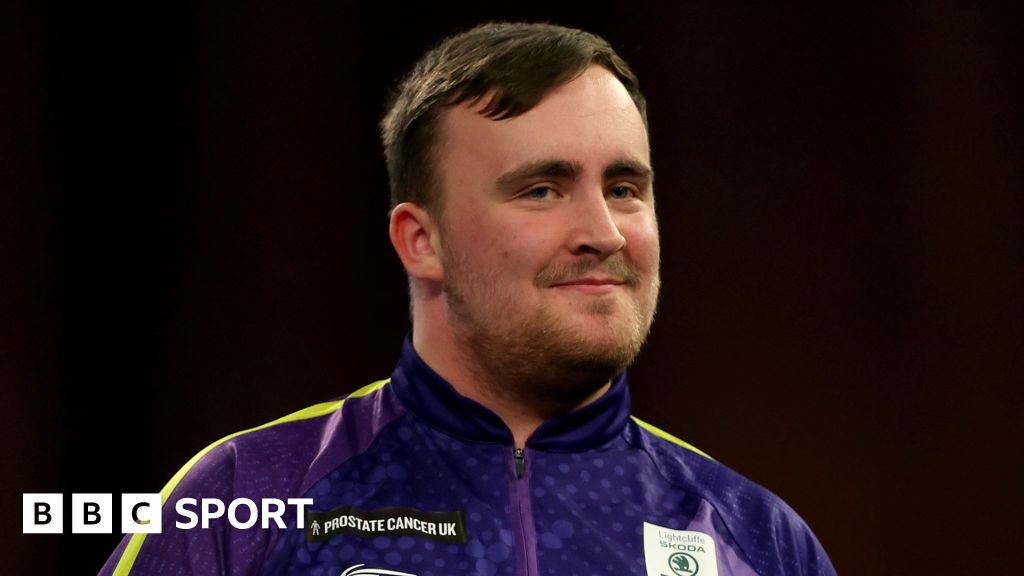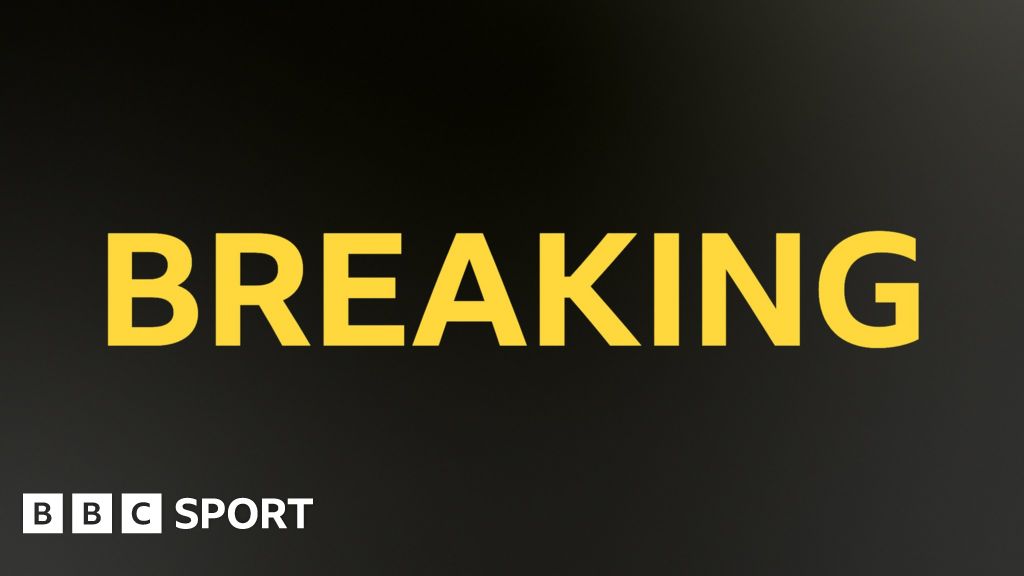 Scottie Scheffler has been susceptible to missing short putts for most of the year
Scottie Scheffler has been susceptible to missing short putts for most of the yearIt is perhaps the most famous missed putt in Ryder Cup history.
Germany's Bernhard Langer had a six-footer to win his crucial singles match and retain the trophy for Europe at Kiawah Island in 1991.
Langer had seen a first putt slide agonisingly beyond the hole. His return grazed the right edge. Cue raucous American celebrations. The two-time major winner would later say it was the most pressure he had felt under at a Ryder Cup.
"Imagine that pressure. You're quite stressed. Your heart is beating faster. Your muscles are a bit more tense. The psychology is influencing your physiology and your technique goes awry," says Andy Cooke, a senior lecturer in performance psychology at Bangor University.
"But new brainwave technology may actually allow us to predict whether a putt will go into the hole or not."
The idea of psychology influencing physiology is nothing new. Seven-time major winner Arnold Palmer once said: "Golf is a game of inches. The most important are the six inches between your ears."
But 21st Century advances in technology to monitor the brain are making Palmer's famous line more relatable.
Langer acknowledged in an interview with Golf Digest that he had had the yips - a state of nervousness that causes players to miss easy putts - four times in his career and called them a "tournament disease that show up at the worst time".
And while nobody is suggesting that world number one Scottie Scheffler has the dreaded yips, his putting is certainly under the microscope, despite his protestations.
The American arrives in Rome for this week's Ryder Cup on the back of, on the face of it, a successful season with two wins on the PGA Tour and three top 10s in the majors.
He was joint 23rd at The Open, ending an incredible run of 19 consecutive events in which he finished 12th or higher. But 2023 could, and should, have been better. And Scheffler knows it.
"I had back-to-back tournaments [in the spring] when I could have won but I putted poorly, and all of a sudden, it became this thing," he said at The Open in July.
"I'll watch the highlights of my round, and even the announcers, any time I step over a putt, it's like, 'this is the part of the game he struggles with'. You guys see me miss a 12-footer and [say] I'm struggling again."
From tee to green, the Texan is untouchable. The stats prove that. But his putting stats, of which there are many, paint a different picture.
He holed only 25% of putts from 10 feet, compared with the PGA Tour lead of 69%. Only two players out of 181 are below him on that list. Scheffler is 168th from four to eight feet, and 160th from 10-15 feet. It doesn't make for pretty reading.
At last month's BMW Championship in the US, he conceded he was feeling the pressure after missing a six-foot birdie putt on the 16th and a shorter one for par on the next. He finished two shots behind winner Viktor Hovland.
With about 40% of golf shots taken with the putter, being able to control what goes on underneath your skull is clearly important, particularly at an event like the biennial battle between Europe and the United States.
Research into brain activity during sport picked up in the 1980s but with limited success because athletes were hooked up to monitors in labs. Recent advances in wireless technology have made field-based activity more accessible in the pursuit of better performance.
"The technology is making it possible to collect high quality movement data," says Cooke, who has been working in the field for more than a decade and is part of Bangor's Institute for the Psychology of Elite Performance.
While it is still early days in the accuracy of wireless monitoring of the brain, players such as England's Justin Rose, who will tee it up this week for his sixth Ryder Cup appearance, has used a brainwave-reading headband to train himself to control his emotions.
Australian Jason Day, another who topped the world rankings, and major winner Bryson DeChambeau, nicknamed 'the scientist' for his approach to the game, have also used similar technology, which is readily available to buy.
"Most of us can learn quite quickly how we can use different thought processes to change our brainwaves," says Cooke.
"Neurofeedback is a type of bio-feedback for the brain. Specifically we use small sensors on the scalp to measure brain waves and then we display them on a screen in real time, effectively showing people a mirror into their brain.
"The aim is to try and train people to produce the pattern of brainwaves that we think is optimal for golf putting. We want them to learn to recognise that state and learn to initiate their backswing only when that desired state is produced."
Cooke explains that, in the vast majority of people, the optimal pattern for putting is a quiet left hemisphere of the brain and an active frontal area. The left hemisphere is where verbal communication tends to come from, so if it's 'noisy', that could lead to overthinking your technique, while an active frontal area is good because that is implicated in movement, planning and control.
In Cooke's study, he played a tone through headphones while participants were standing over a putt. The frequency changed and volume faded as the brain reached the optimal pattern.
So how do you actually train your brain? Cooke equates it to hooking yourself up to a heart monitor. "You can quickly see how fast your heart is beating and then you can use relaxing images to help slow it down, or think about different things to speed it up," he says.
"It's the same with brainwaves. People experiment using their own psychological strategies and then after a few sessions they learn to get into the zone and hit the putt."
The study indicated that the two seconds before the ball is hit is critical. Participants were asked to hit 200 eight-foot putts a day for three days. The data showed performance improved by 21% in high-handicappers after three hours of training with neurofeedback.
A missed putt in a regular week may cost an individual player thousands of pounds in personal prize money, but a missed putt at Marco Simone on Sunday may be priceless.

 Movie
Movie 7 months ago
113
7 months ago
113 






![Presidents Day Weekend Car Sales [2021 Edition] Presidents Day Weekend Car Sales [2021 Edition]](https://www.findthebestcarprice.com/wp-content/uploads/Presidents-Day-Weekend-car-sales.jpg)



 English (United States)
English (United States)